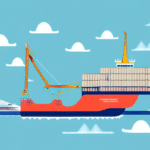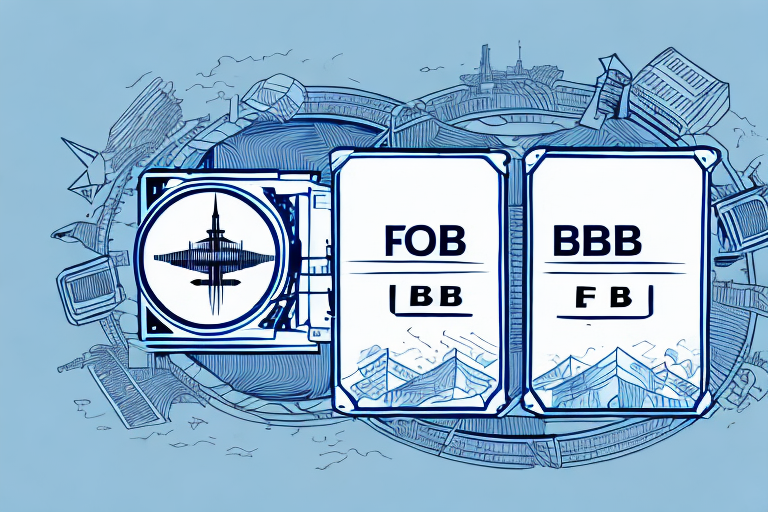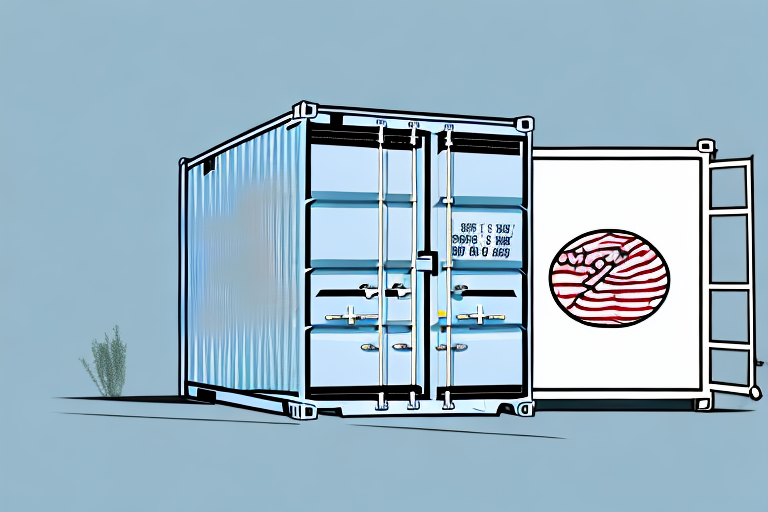Understanding the Difference Between FOB Destination and FOB Shipping Point
When shipping goods internationally, understanding the difference between FOB Destination and FOB Shipping Point is crucial. These terms determine the point at which ownership of the goods transfers from the seller to the buyer, as well as who is responsible for the cost and risk of transporting the goods. This article provides an in-depth analysis of both terms, including their definitions, advantages, disadvantages, and practical tips for successful shipping under each term.
What is FOB Shipping Point?
FOB stands for “Free On Board” and indicates that the buyer takes ownership of the goods at the point they are loaded onto a carrier, typically at the seller’s shipping dock or warehouse. In other words, FOB Shipping Point means the seller is responsible for loading the goods onto the shipping carrier and bears the cost and risk of transporting those goods until they are loaded onto the carrier.
It is important to distinguish FOB Shipping Point from FOB Destination. With FOB Destination, the seller is responsible for the goods until they reach the buyer’s location. This distinction helps avoid confusion or disputes between buyers and sellers regarding responsibility and cost during transit.
According to the International Chamber of Commerce, understanding Incoterms like FOB Shipping Point is essential for smooth international trade transactions.
What is FOB Destination?
FOB Destination applies when the buyer takes ownership of the goods at the destination location. This means the seller bears all costs and risks until the goods have been delivered to the buyer’s specified location. Consequently, the seller is responsible for any damages or losses that occur during transit.
FOB Destination is often preferred by buyers who want assurance that the goods are delivered safely and in good condition without bearing transportation risks or costs. It also allows buyers to have more control over the shipping process, such as choosing the carrier and shipping method that best suits their needs.
For detailed guidelines on Incoterms, refer to the Export.gov Incoterms Overview.
Key Differences Between FOB Shipping Point and FOB Destination
- Ownership Transfer: FOB Shipping Point transfers ownership when goods are loaded onto the carrier, whereas FOB Destination transfers ownership upon delivery to the buyer's location.
- Risk Responsibility: Under FOB Shipping Point, the buyer assumes risk once the goods are loaded. Under FOB Destination, the seller retains risk until delivery.
- Shipping Costs: FOB Shipping Point typically results in lower shipping costs for the seller, while FOB Destination may involve higher costs due to the seller bearing transportation expenses.
Advantages and Disadvantages of FOB Shipping Point
Advantages
- Lower shipping costs for the seller as they are only responsible for transporting goods to the shipping point.
- Greater control for the buyer over the shipping process, including carrier selection and potential cost savings.
Disadvantages
- The seller retains responsibility for goods until they are loaded, which can lead to additional costs if issues arise during loading.
- The buyer assumes risk immediately after loading, requiring them to manage and insure the goods during transit.
Advantages and Disadvantages of FOB Destination
Advantages
- The seller maintains responsibility for transport-related costs and risks until delivery, ensuring better control over shipping conditions.
- Enhanced buyer confidence as the seller manages the shipping process, reducing the buyer’s logistical burden.
Disadvantages
- Higher shipping costs for the seller due to extended responsibility for transportation.
- Potential delays if the seller faces logistical challenges in delivering the goods.
Determining Which FOB Term to Use
Choosing between FOB Shipping Point and FOB Destination depends on several factors:
- Type of Goods: Perishable or fragile items may benefit from FOB Destination to ensure careful handling and delivery.
- Transportation Distance: Long-distance shipments might be more cost-effective under FOB Shipping Point, while shorter distances may favor FOB Destination.
- Buyer and Seller Preferences: Negotiating based on each party’s strengths in logistics and cost management can lead to more favorable terms.
- Cost of Transportation: Buyers who can secure better shipping rates may prefer FOB Shipping Point to optimize costs.
For legal implications and contract stipulations, consulting with a legal expert is recommended to ensure the appropriate FOB term is selected.
Impact of FOB Terms on Shipping Costs and Taxes
Shipping Costs
FOB Shipping Point generally leads to lower shipping costs for the seller but transfers transportation costs to the buyer. Conversely, FOB Destination increases shipping costs for the seller as they cover the entire transportation process.
Taxes and Import/Export Regulations
Under FOB Shipping Point, the buyer is responsible for all taxes, tariffs, and customs fees associated with importing the goods. Under FOB Destination, the seller handles these costs, simplifying the process for the buyer.
For more information on import/export regulations, refer to the U.S. Department of Commerce Trade.gov.
Understanding the Role of Incoterms in FOB Shipments
Incoterms are standardized trade terms defined by the International Chamber of Commerce (ICC) that clarify the responsibilities of buyers and sellers in international transactions. Terms like FOB Shipping Point and FOB Destination fall under these guidelines, providing a common framework to mitigate misunderstandings.
Incoterms address aspects such as risk transfer, cost allocation, and customs clearance responsibilities, ensuring both parties have clear expectations. Staying updated with the latest Incoterms, such as those introduced in Incoterms 2020, is essential for effective global trade.
Learn more about Incoterms at the International Chamber of Commerce website.
Common Misconceptions About FOB Terms
A prevalent misconception is that FOB terms solely determine liability for damages during shipping. While FOB terms establish when ownership and risk transfer, they do not replace insurance agreements or address liability arising from negligence or other factors. Comprehensive shipping contracts should include clear insurance terms to cover potential damages.
Additionally, some believe FOB terms automatically handle all logistical aspects, but in reality, specific responsibilities like customs clearance and documentation must be explicitly addressed in the contract.
Real-Life Scenarios: When to Use FOB Shipping Point vs. FOB Destination
FOB Shipping Point Example
A buyer with established relationships with reliable carriers can negotiate FOB Shipping Point to leverage better shipping rates and faster transit times, reducing overall costs and improving efficiency.
FOB Destination Example
A seller shipping fragile electronics may opt for FOB Destination to maintain control over the transportation process, ensuring the goods are handled carefully and delivered in optimal condition.
Tips for Negotiating Better FOB Terms
- Understand the Costs and Risks: Clearly assess who will bear transportation costs and risks under each FOB term.
- Clear Communication: Both parties should explicitly outline responsibilities and expectations in the sales agreement.
- Leverage Expertise: Utilize the logistical strengths of either the buyer or seller to negotiate terms that optimize efficiency and cost-effectiveness.
- Include Insurance: Ensure that insurance coverage is addressed to protect against potential damages during transit.
Best Practices for Successful Shipping Under FOB Terms
- Detailed Contracts: Draft comprehensive contracts that specify all responsibilities, costs, and risk transfers associated with the chosen FOB term.
- Proper Documentation: Maintain accurate and complete shipping documents, including bills of lading, invoices, and customs paperwork.
- Choose Reliable Carriers: Whether managing shipping as a buyer or seller, select reputable carriers to minimize risks during transportation.
- Packaging and Labeling: Ensure goods are securely packaged and correctly labeled to prevent damage and facilitate smooth transit.
Conclusion: Choosing the Right FOB Term for Your Shipping Needs
Selecting the appropriate FOB term is a strategic decision that impacts cost, risk, and overall efficiency in international shipping. By thoroughly understanding the differences between FOB Shipping Point and FOB Destination, evaluating the specific needs of your goods and business operations, and adhering to best practices, you can optimize your shipping processes and foster strong business relationships.
For further guidance on international shipping terms and practices, consult resources such as the International Chamber of Commerce and the U.S. Department of Commerce Trade.gov.






















